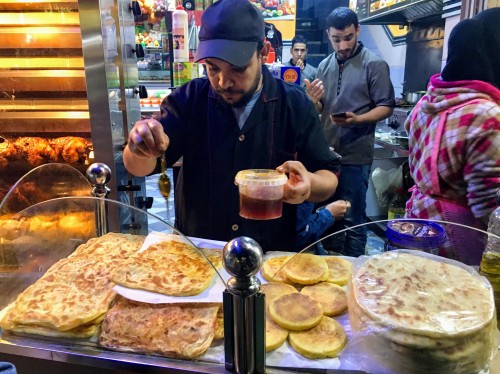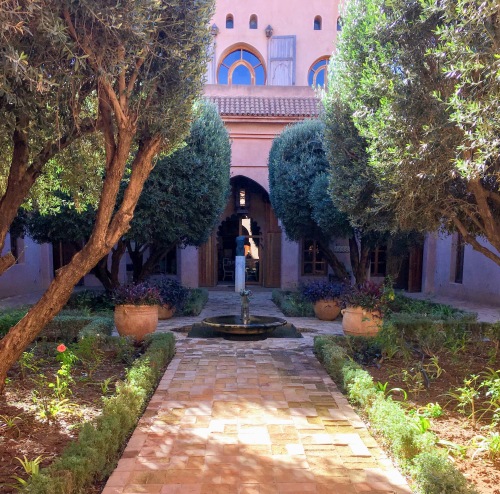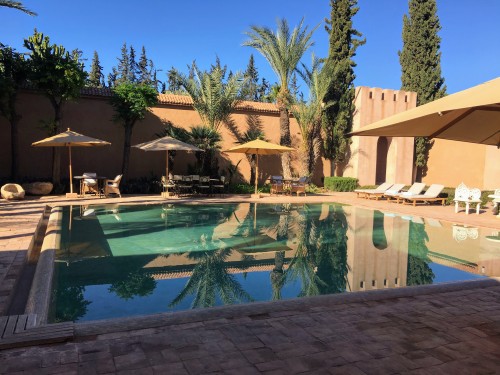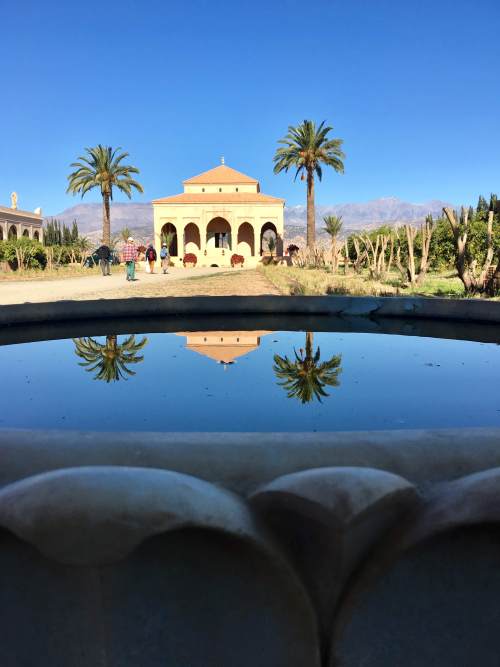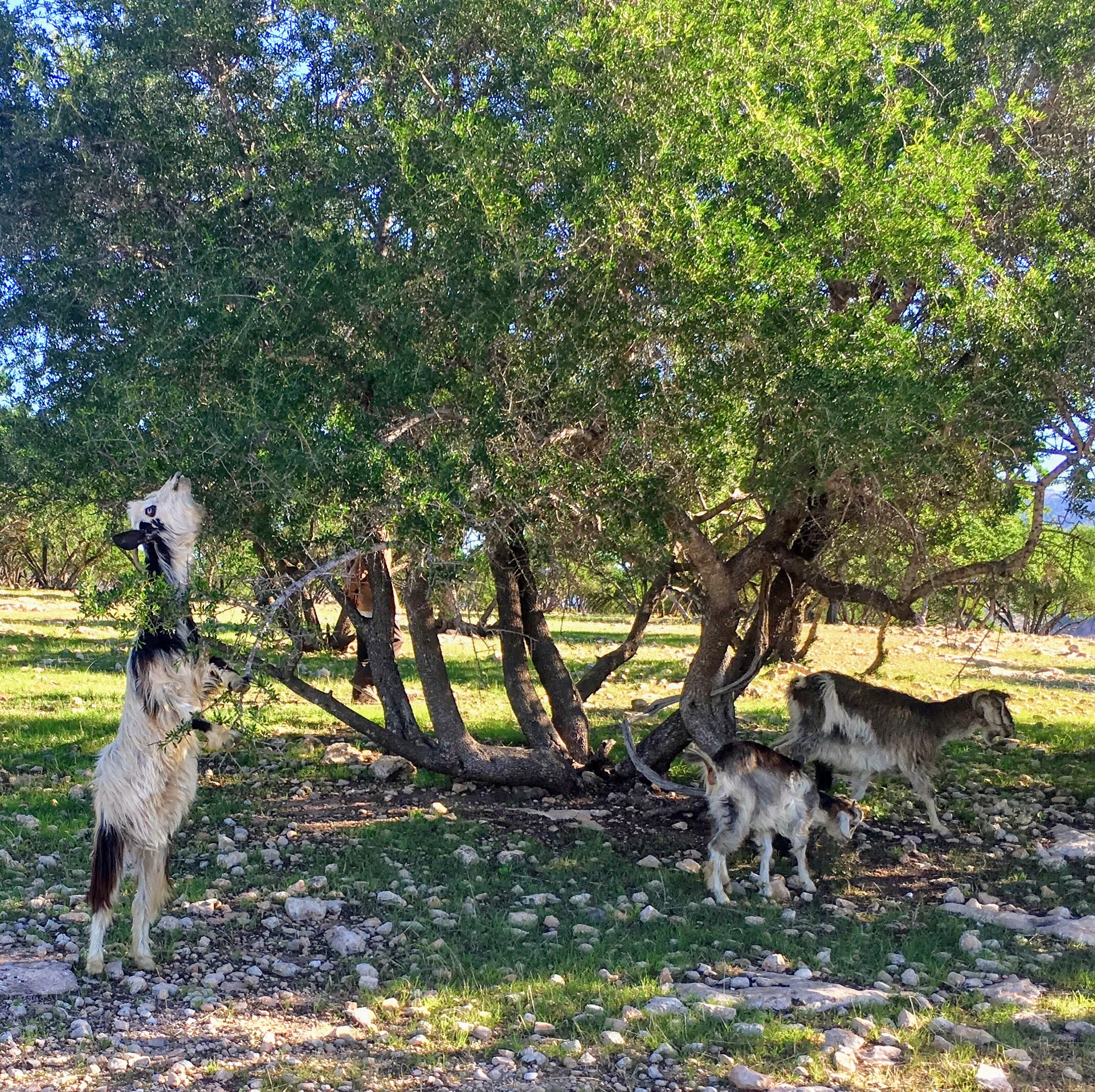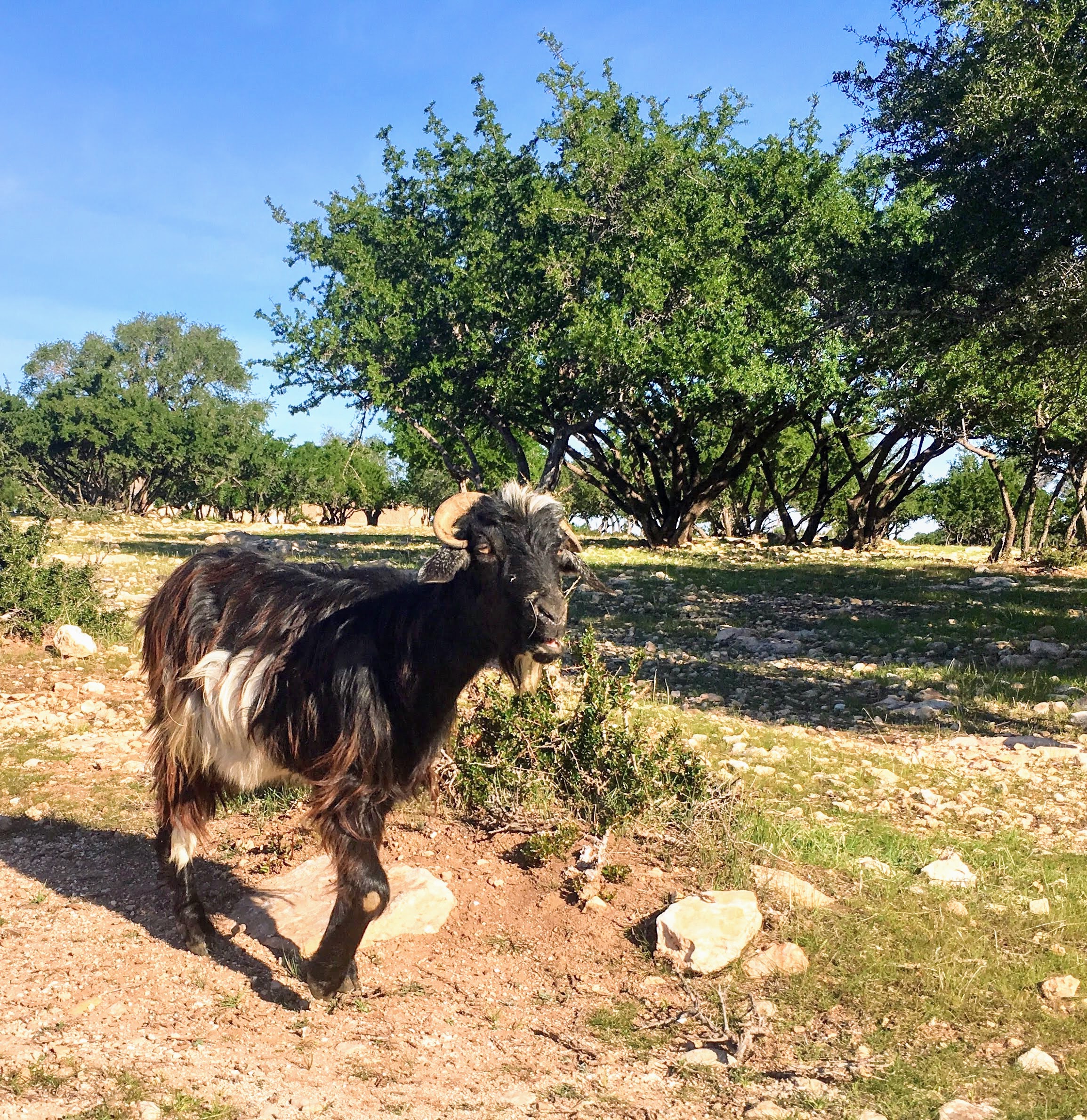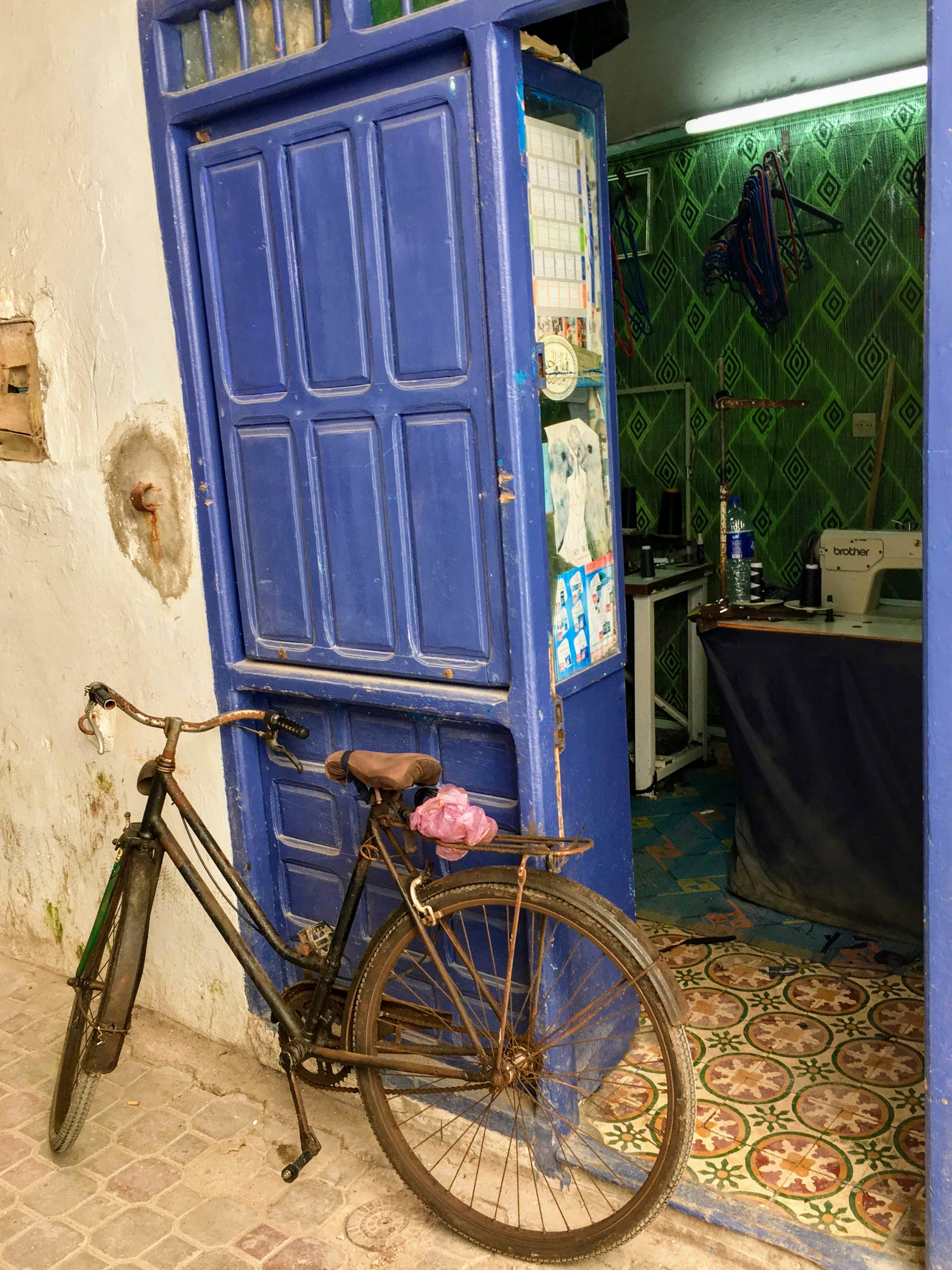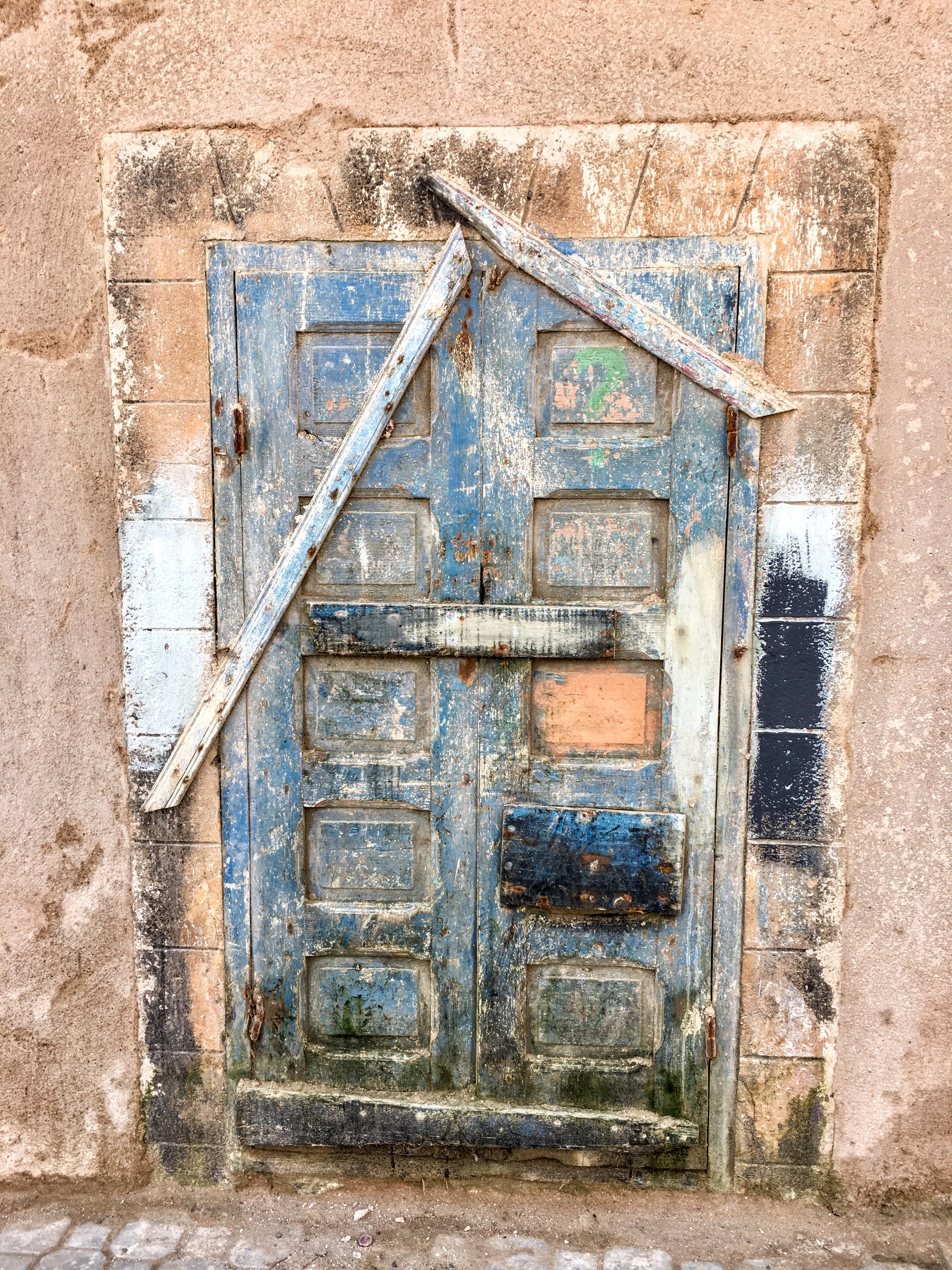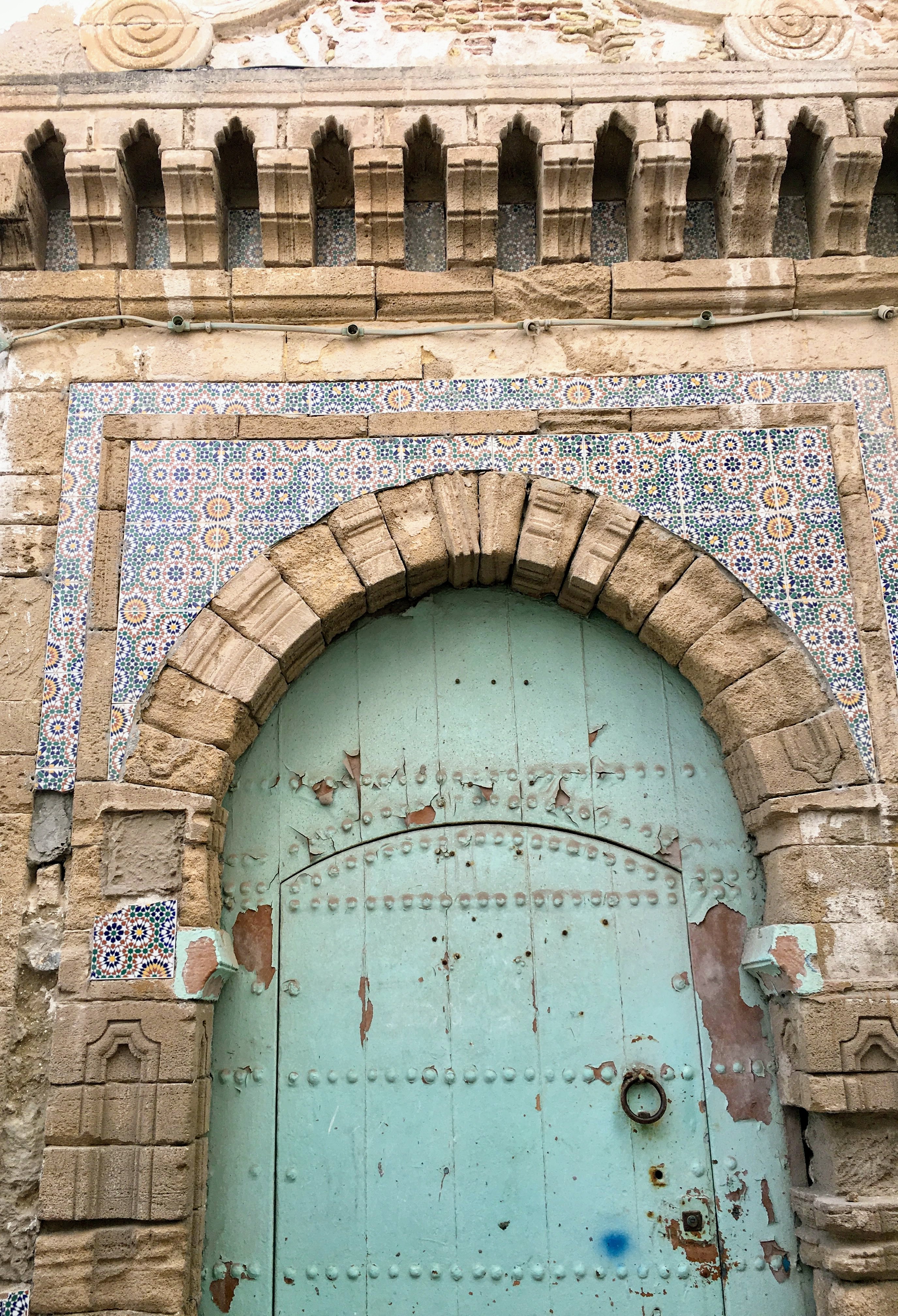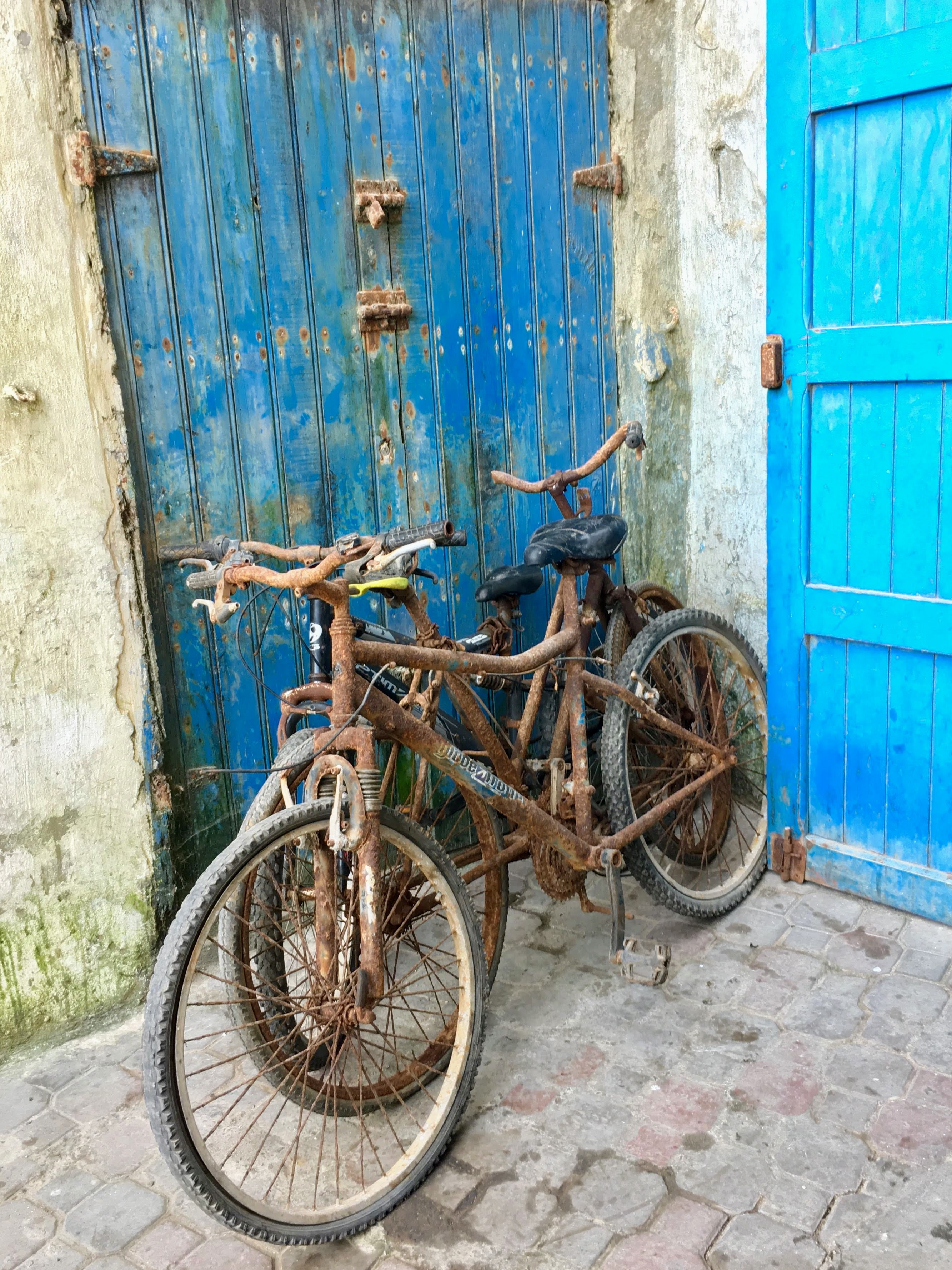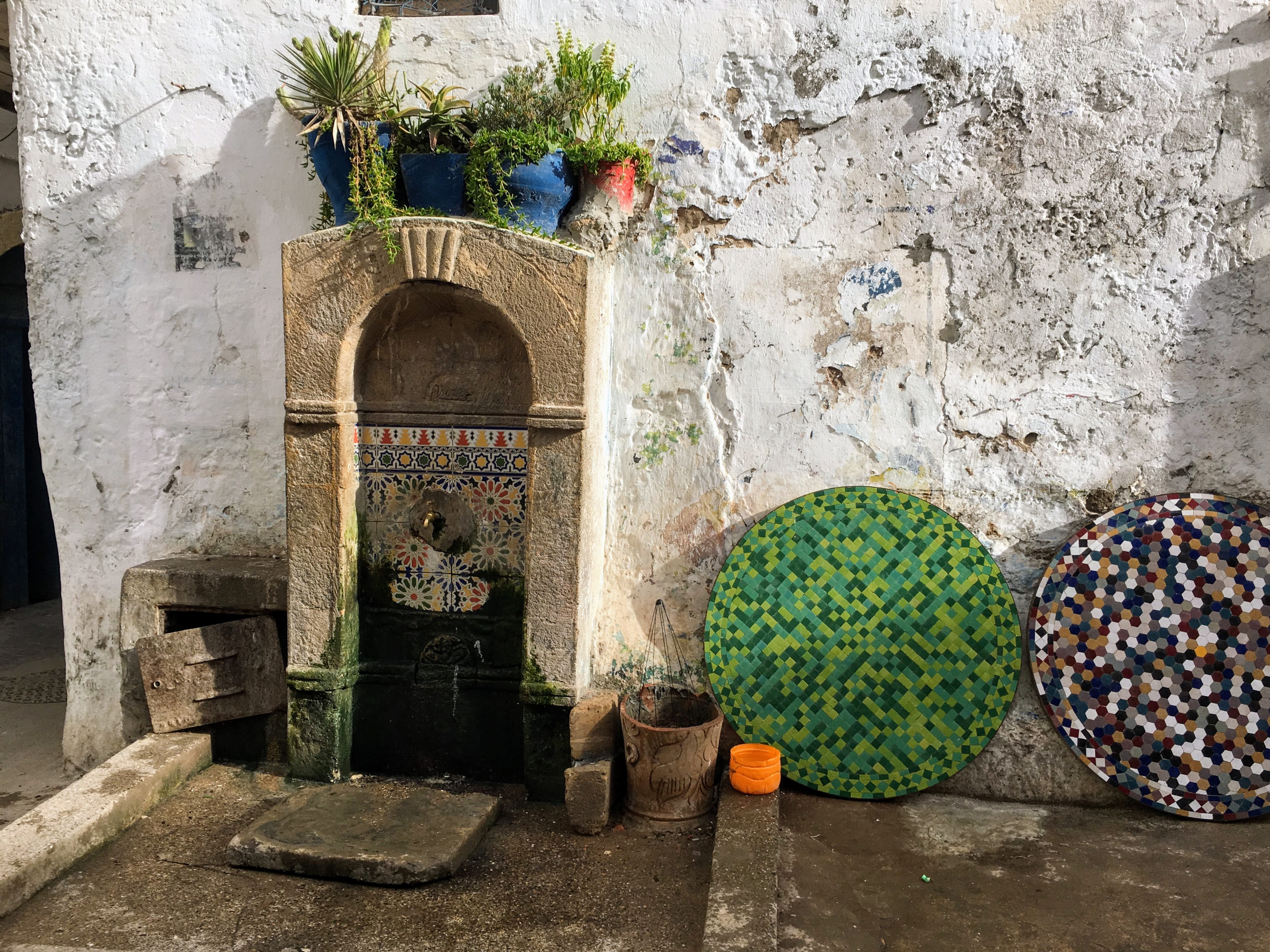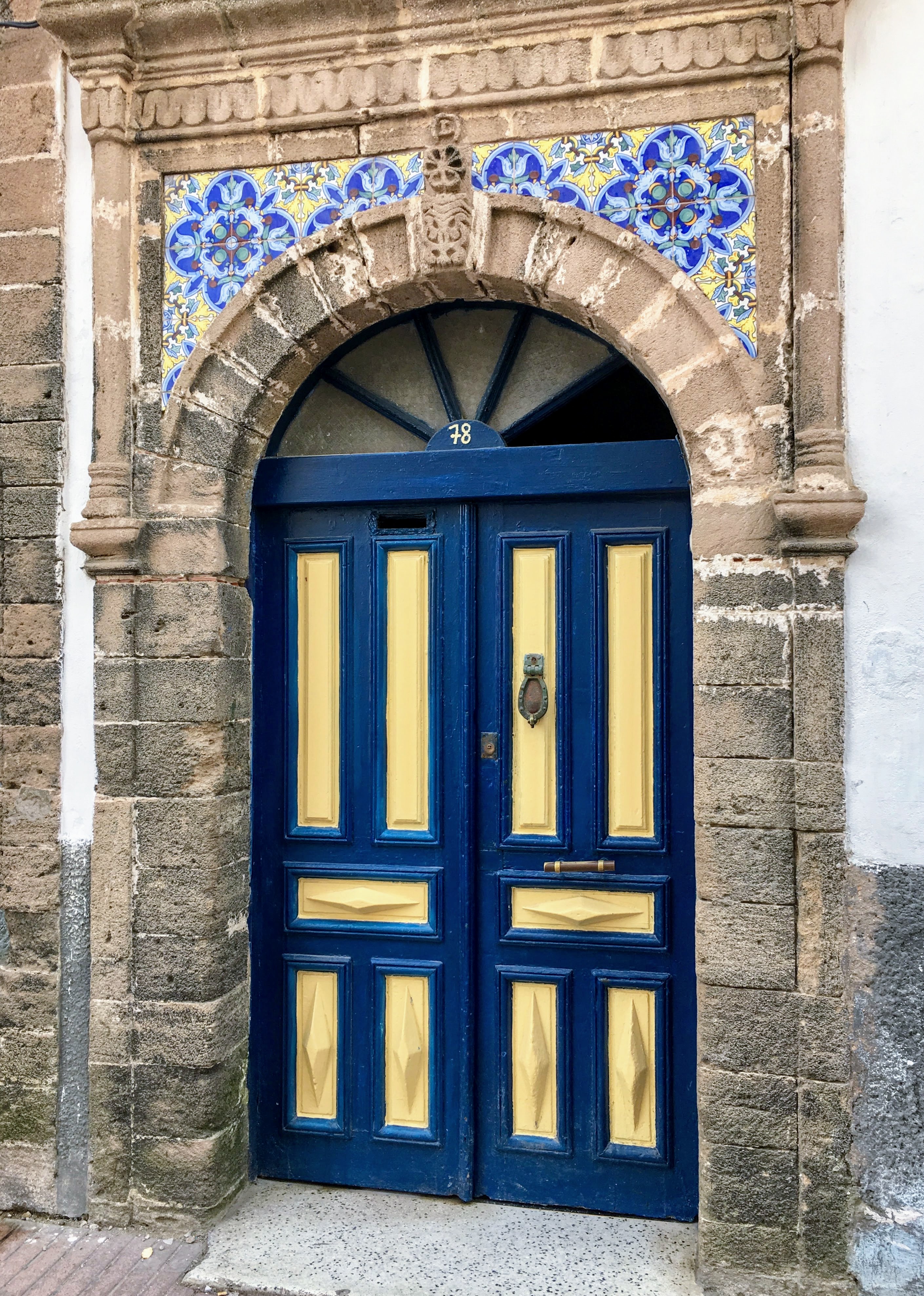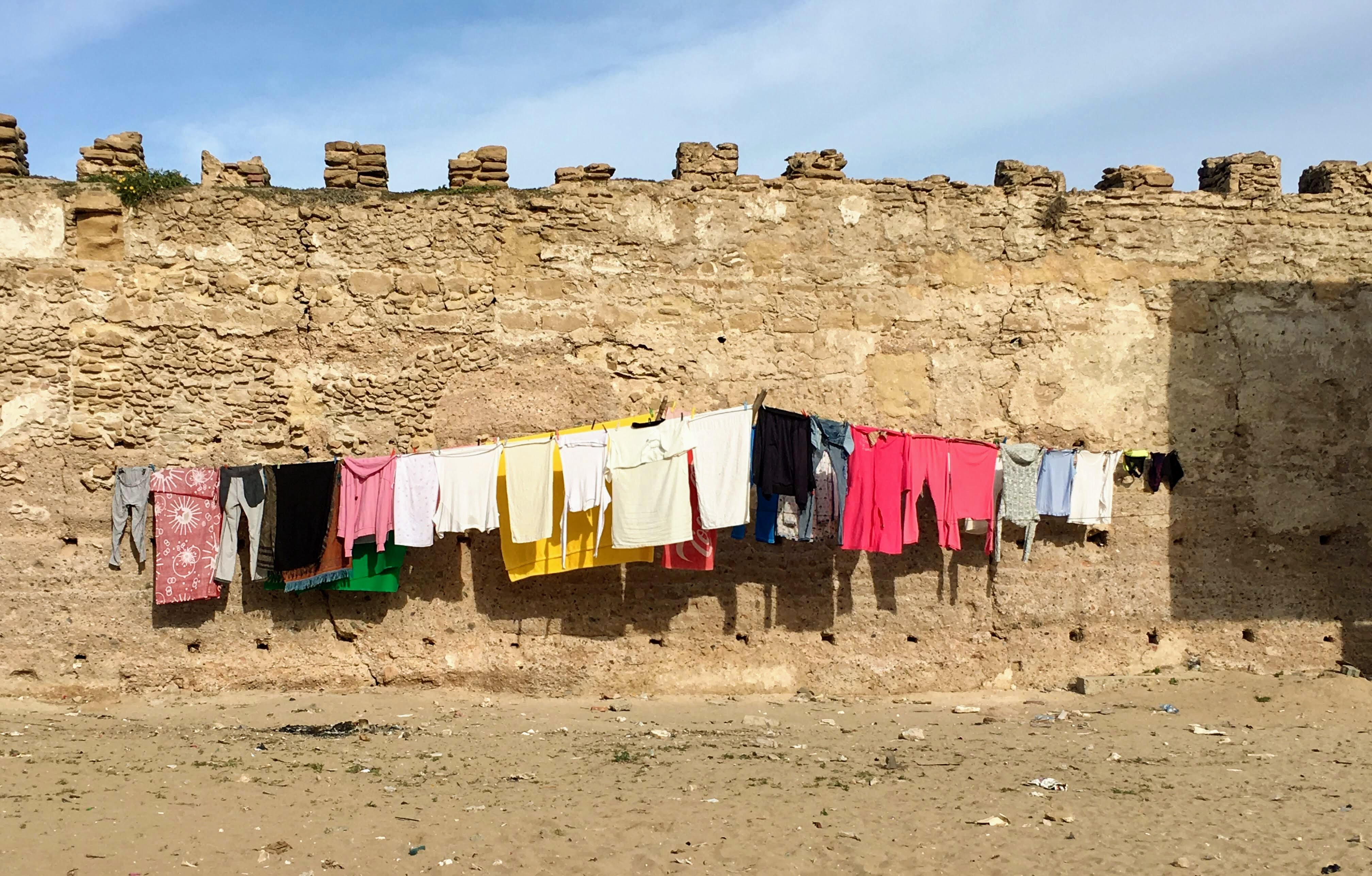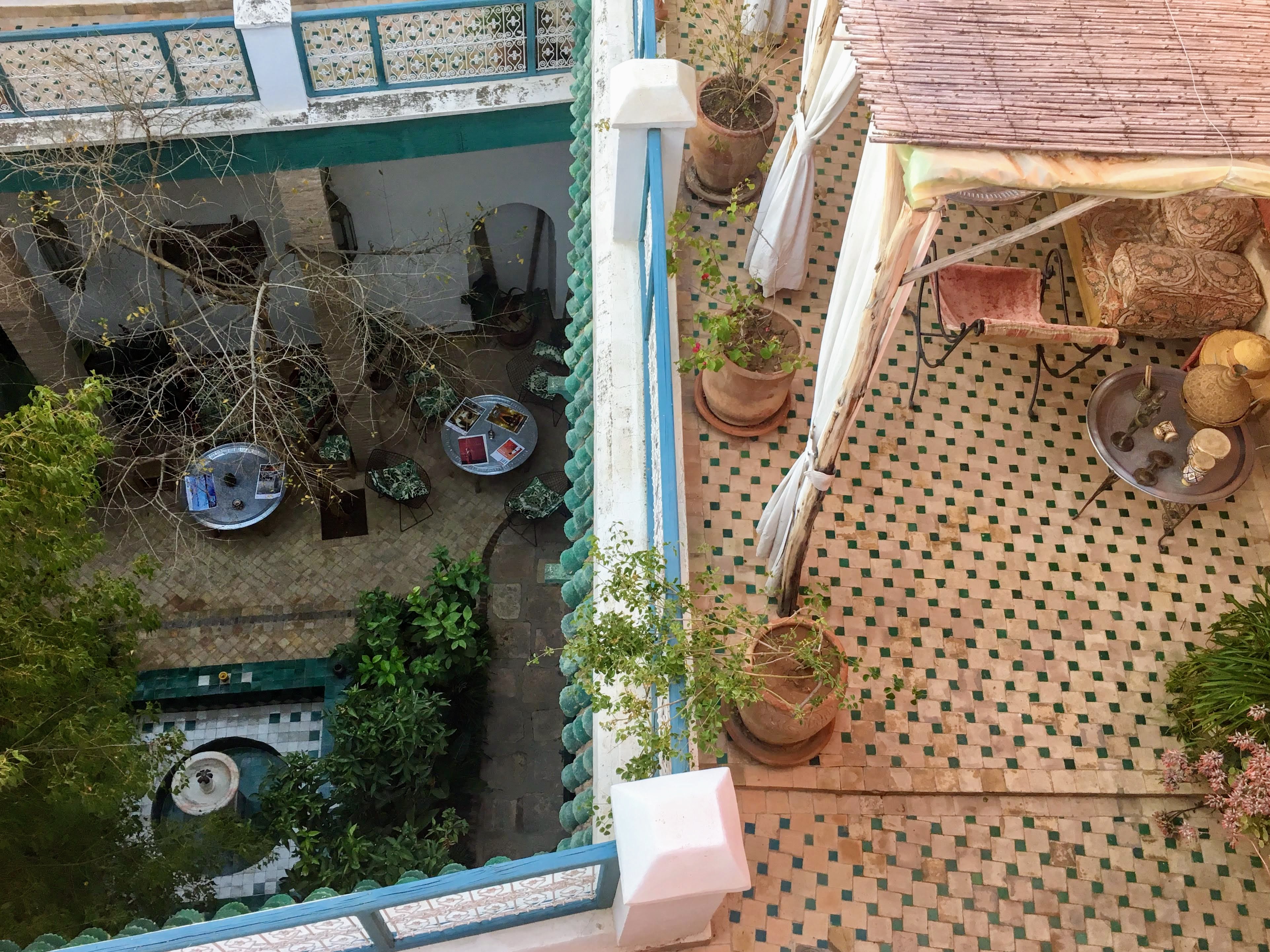
Our riad in Marrakech- our little heaven
Flight: We flew in from the USA with Royal Maroc to Casablanca. Flight went smooth, new airplane, movies, and I even got my Gluten free meal ). Landing and checking out was good. Be prepared with an address in Morocco, as you will be asked to provide one at the immigration. We provided the name and town of our first Riad.
Money: Morocco is a cash based economy. Almost everywhere, they would prefer cash, even in some of the riads. The most popular currency are Moroccan Dirhams and Euros. They will also accept US Dollars. An easy calculation to make if you’re from the States, is to divide DH by 10, and that’ll roughly give you a general idea of the price in $. Be prepared with cash. We brought cash in $ and € and changed them into DH every once in a while. In the markets and local restaurants, museums and vendors- you definitely need local currency. They do not like credit cards, but some high end places would accept them- so ask in advance if you know you’re short on cash. Another option is to withdraw money from ATM machines in Morocco, but then you have to find out about the foreign transaction fees, and if it makes sense to you.

Munching Prickly Pears in Taroudant’s market. Prepare MD.
After passing airport immigration, after the baggage claim, right before stepping outside the building, we changed some $$ to local Dirhams, enough to get us started.
You’ll be reading a lot about haggling in Morocco, which is very true. Except in museums, restaurants, and riads, prices everywhere else is almost always negotiable (including taxis).
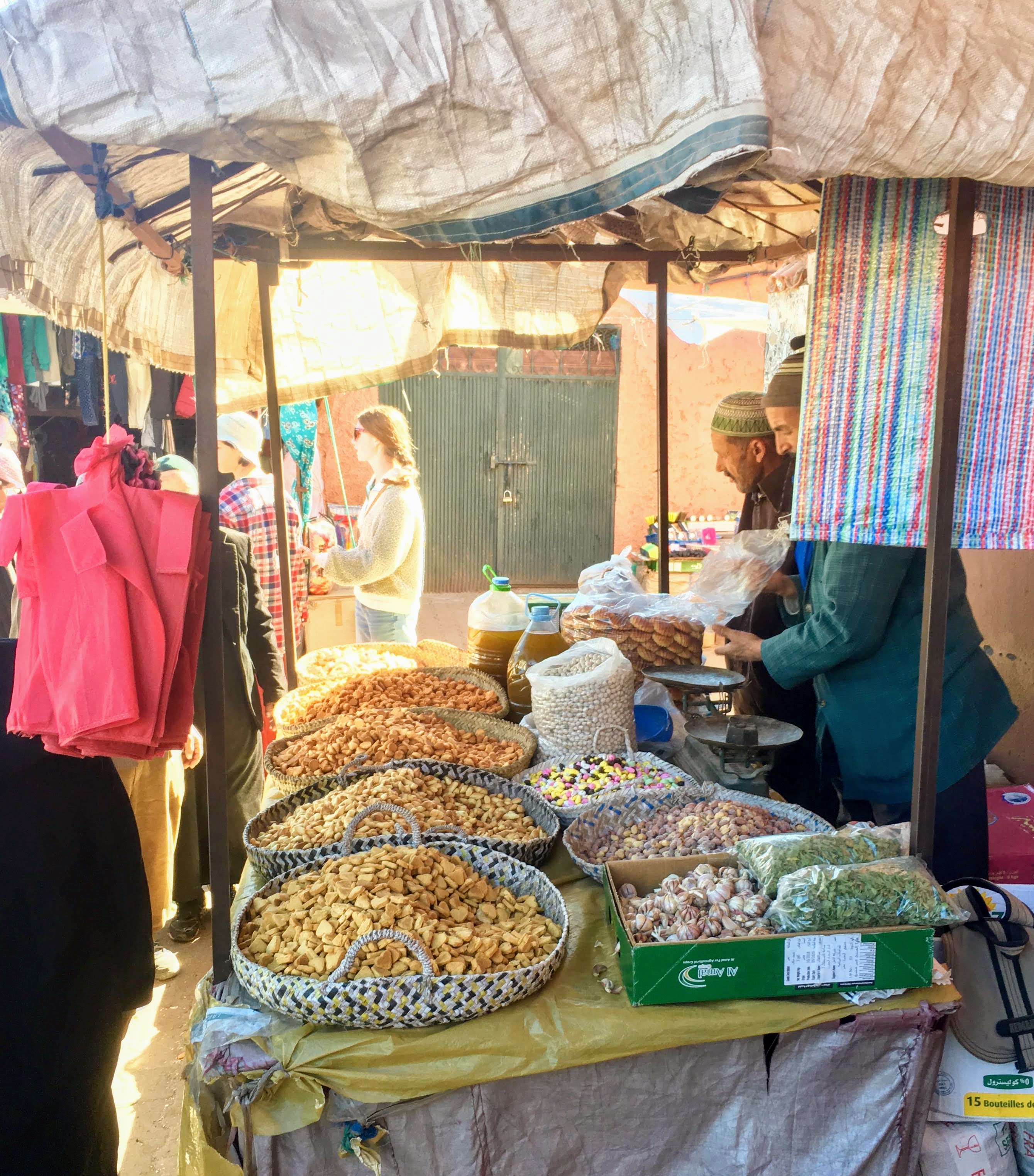
Market day in the Berber town of Asni
We were welcomed by our driver who waited for us outside.
Car + driver: I was debating whether to rent a car or hire a driver, and I couldn’t be happier with my decision. While it maybe more expensive, given all the benefits, the difference in $ is so worth it.
- We got a spacious car with enough room for all of us, a big trunk to our 5 trolleys and a few more bags, and even a place to charge the phone in the rear (on top of the charger in the front).
- Landing in the morning after a long flight, and driving almost a whole day to our first destination, would have been hard. Having a driver allowed us to relax, get much needed rest as we were jet-lagged.
- We made sure to have an English speaking driver, so he explained stuff, pointed out interesting things along the way, and we were able to ask him questions about Morocco and his life.
- Our driver communicated with locals when there was a need to find places. He also contacted our Riads ahead of time, letting them know when to expect us.
- In some places, cars can’t enter the Medina, so the driver took care of dropping us off, parking outside, and of course, he always filled the car with gas (never with us, as to not waste any of our time). So we never paid for gas or parking.
- It is unfortunate, but on and off the highways, there are lots of policemen, both for security reasons, but also for… money. We have been stopped a few times on different occasions. Our driver needed to produce some papers (I counted 5 different papers), and the officials took their time checking the papers very thoroughly. They also checked and open the emergency kit, checked dates on some of its content. Our driver was very organized and seemed like he knew it was coming, so he got a “pass”. We have met with other travelers, both independent drivers, and those who had a driver. They weren’t so lucky. Police would stop them, threaten to give them a ticket and a fine of 500 DH, or they could choose to give “baksheesh“. At any case, the tourists that had a driver (baksheesh paid by the driver), didn’t pay anything. So we had our peace of mind. Don’t want to scare anyone, and many do choose to rent a car, just reporting on our experience.
- A driver allowed us flexibility, independence of when, and where to go and stop (to take pictures, for example), and to be spontaneous.
Our great driver was Loutfi, who worked for Jalil Benlabili from Morocco Unplugged. Best to get in touch with Jalil via Whatsapp: +212 629809359, moroccounplugged@gmail.com.

A spontaneous stop on the way to Taroudant
Having said all that, our driver was not an authorised tour guide. He may speak English and know things, but he wasn’t allowed to enter the Medina and show us around, but rather wait outside. Also, our driver was a Fez guy, he knew a lot about the northern part of morocco and the desert, and while he knew how to drive to some major places using the highways, it was his first time driving with us to other destinations.
Conclusion: do your homework: once you know your general itinerary, read TA forums, Lonely Planet, travel blogs, and be knowledgeable about your destinations. Also, on your way, interact with locals. Not only is it one of the best things about traveling: learning about the local culture, but also getting good tips about places worth visiting, eateries, etc. Read my posts to find out about the special places we visited, thanks to locals.
Riads: Riads are traditional Moroccan houses with an interior garden or courtyard, that turned hotels. All of the riads we saw and visited (even if we didn’t stay over) were beautiful, and wonderfully designed. I would search on TA/Booking websites some riads, would then look on the map where they’re located, and finally contact the riad by email, to find out prices, and specifications (especially since we needed 2 rooms, was breakfast included, local taxes, do they accept a credit card. etc’).

Our riad in Essaouira
Getting around: Before leaving to Morocco, I made my family download onto their cells two apps that were very handy: Maps.Me and Google Maps. They’re both a navigating platform that work offline as well. I downloaded maps of the areas where we were going, marked on the maps different points of interest (our Riads, potential restaurants, attractions), and very easily shared those points with my family, so it all transferred to their maps.

Our driving itinerary
The apps were useful when we entered the Medina to navigate our way inside. Also marked where the driver was waiting for us outside, so it’ll be easy to find him. Finally, sometimes we would split, so we marked a place on the map where we could all meet later. That technology is great!
Also- Unless you speak Moroccan- French is your next best thing. Almost everyone speaks French. But between a few words in Arabic, a few in French, Google translator, English and body language, we managed just fine. To bargain, you only need to write down numbers 🙂
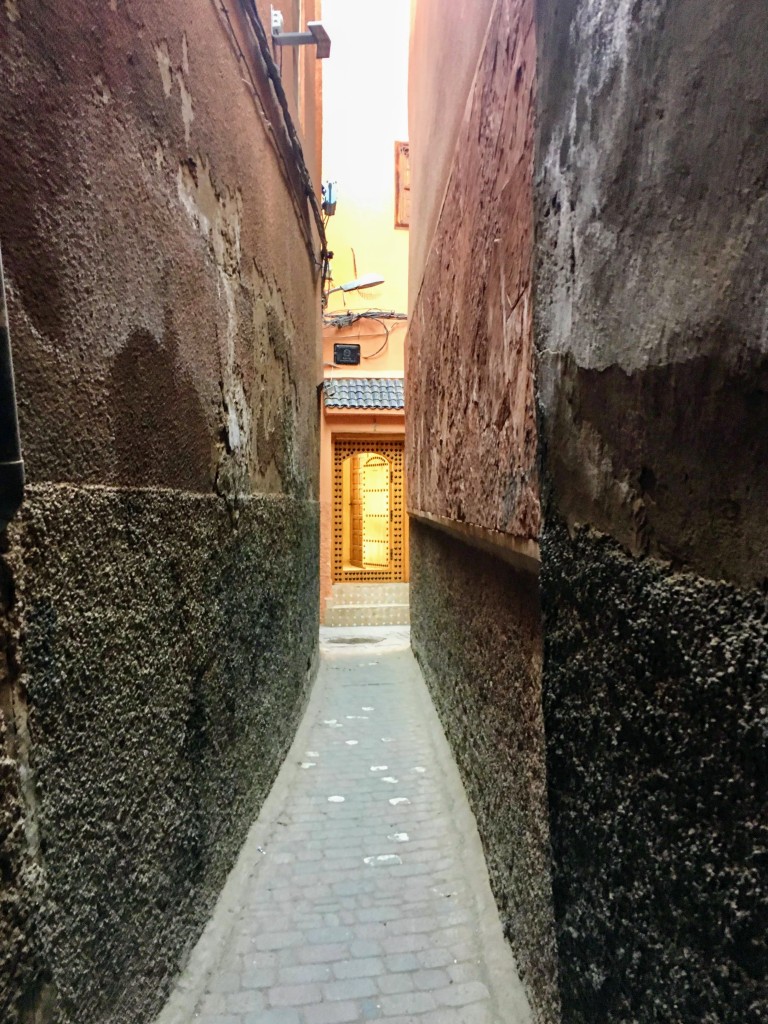
Navigating the narrow alleys of Marrakech
Cell Phones: Yeah, don’t forget those 🙂 but also, bring your chargers, and a portable battery. If you travel with a group (aka- 3 young adults), bring more than one battery. We didn’t purchase a sim, but used free WiFi. A good app for communication via wifi, very popular in Morocco, is Whatsapp. I contacted and talked with the riads, and driver, while still in the US, via Whatsapp. There was free WiFi in all of our Riads and many restaurants and cafes. Remember, our driver helped with his phone when there was a need to communicate over the phone
Weather: We visited Morocco during Christmas break, so along the coast it was wonderfully pleasant, and once we got up to the Atlas mountain it was cold. So depending on which area in Morocco you’ll be and the time of year- please check online, and bring suitable clothes. And… sunglasses. Lots of sun.
Responsible Tourism: Responsible tourism means, among other things, to be aware and have meaningful connections with local people, and a greater understanding of local cultural, social and environmental issues. That’s the kind of travel we usually try to conduct. That is why we chose to experience a few activities that allowed us to be exposed to local traditions, away from the beaten path, while supporting locals by spending our $$ with them. This was a win-win.
31.791702
-7.092620
Read Full Post »
